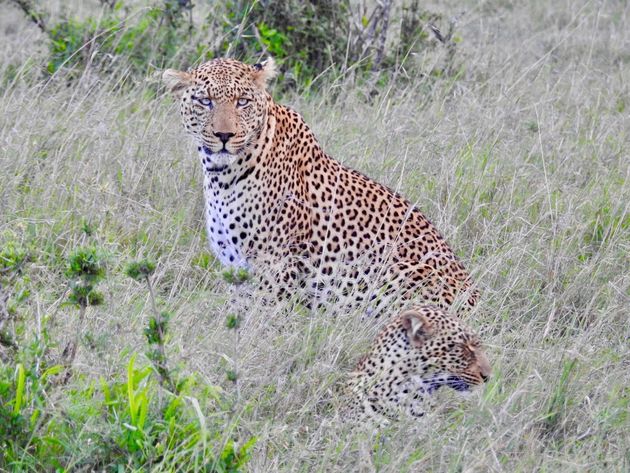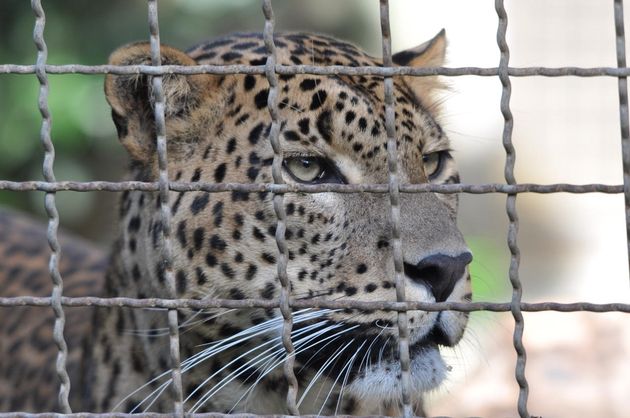The Bible mentions the leopard several times with the Hebrew term namer, which means literally “the spotted beast”.
 Photo: Antonio Cruz
Photo: Antonio Cruz
Can the Ethiopian change his skin
or the leopard his spots?
Then also you can do good
who are accustomed to do evil.
(Jer. 13:23)
The Bible mentions the leopard several times with the Hebrew term namer, which means literally “the spotted beast” (Song of Solomon 4:8; Isaiah 11:6; Jeremiah 5:6; 13:23; Hosea 13:7; Habakkuk 1:8).
The Aramaic term is nemer, and this is the term used in Daniel (7:6), while in New Testament Greek it is párdalis, which means “leopard” and also “panther”.
From the different verses where this animal is mentioned, it is possible to deduce the image that the Hebrews had of it. They saw it as being astute because it stalks its prey very patiently (Jeremiah 5:6); its habits were nocturnal, and it would strike at great speed (Hab. 1:8); it had a predilection for domestic animals like goats, which is why the millennium depicts it living at peace with these animals (Isaiah 11:6); it could also be dangerous for human beings (Hosea 13:7), and it was abundant in Bible times on the hills of Palestine (Song of Solomon 4:8). However, at present the Arabian leopard (Panthera pardus nimr) is a subspecies of the leopard which is a species in grave danger of extinction. The population in the desert of Negev (Israel) is now believed to consist of fewer than 20 specimens. Although in the Arab peninsula (Yemen and Oman) there may be around 200 more specimens.

[photo_footer] Photo: Antonio Cruz [/photo_footer] Scripture uses the image of the leopard to illustrate ferocity, speed and astuteness, when referring to the military might of certain ancient empires. One case in point is Alexander the Great (Daniel 7:6), which says: “After this I looked, and behold, another, like a leopard, with four wings of a bird on its back. And the beast had four heads, and dominion was given to it.” These four heads presumably refer to Alexander’s four successors, who, upon their father’s death, divided among themselves the vast empire that he had acquired. Also in the book of Revelation there is a reference to this image described in Daniel, and we read the following about it: And the beast that I saw was like a leopard; its feet were like a bear's, and its mouth was like a lion's mouth. And to it the dragon gave his power and his throne and great authority.” (Revelation 13:2). The Roman empire exhibited the same brutality that characterised the three previous empires: Babylon, Media and Persia.
John, the author of the last book of the Bible, shows through such images that the “dragon” or Satan is capable of working in the world through certain human powers and imperia.
Some ancient natural historians believed that leopards were a cross between lions and panthers, hence the name that they assigned to them: (leo “lion” and pardus “panther”). However, these are two very different species belonging to the same genus: Panthera leo (lion) and Panthera pardus (leopard). On the other hand, the black panther in Africa and Asia is a melanic variation, due to the recessive allele in its genome. There are also black melanic variations in American jaguars (Panthera once).
On the other hand, in the American continent there is the Leopardus genus, which includes smaller felines, such as the ocelot (Leoparus pardalis), which were given this name because of their superficial similarity to the African and Asian leopards belonging to the Panthera genus.
In Bible times there were leopards and black panthers in Africa, Arabia, Lebanon, Syria and Palestine. The beauty of the leopard’s brownish yellow hide, with its numerous black spots, caused thousands of them to be hunted throughout history to make coats and other items of clothing. From ancient Egypt’s dignitaries and priests to 20th century fashion designs, leopards were a source of clothing and accessories for whoever could afford such aesthetic luxuries. In a report published in 1963 by the International Union for the Conservation of Nature, it was said that 50,000 leopards to supply skins for Western female fashion. A single coat required between 5 and 7 skins. Most of these skins were smuggled from Somalia and Ethiopia. The poachers who hunted these leopards by means of ropes, traps and poison, received one pound sterling for each skin.

[photo_footer] Photo: Antonio Cruz [/photo_footer]
Leopards are immensely strong for their relatively small size. This allows them to climb into the upper branches of trees with prey of considerable weight in their mouths. Due to competition with other much larger carnivores, like lions or hyenas, they are forced to carry their prey into the treetops that are inaccessible to these other animals. They can leap across distances of 6 metres or more, and swim to hunt down aquatic animals. They feed on a wide range of organisms, from dung beetles to antelopes larger than themselves. Many people confuse them with cheetahs, especially because of the similar appearance of their skin. However, they are very different mammals, both morphologically and biologically, and are classed as different genera.
The Arabian leopard, which appears in the Bible, has slightly lighter skin, and is smaller, the males not exceeding 30 kg, and the females weighing around 20 kg. They are about 1.3 metres in length, not including their tail and feed mainly on hares, coneys and the Nubian ibex. Some countries are drying to breed them in captivity before releasing them into the habitats where they used to thrive.

[photo_footer] Photo: Antonio Cruz [/photo_footer]
The text from Jeremiah (13:23), which refers to the leopard not being able to change its spots, is an allusion to the shame incurred by Judah after forsaking God in order to serve the Baals. The question the prophet poses is this: Can the people do good again after having become so accustomed to doing evil? The answer is clear. No, they cannot change. Just as leopards could do nothing to change their pigmentation, neither could the Hebrews do anything to avoid the consequences of their faithlessness. When people forsake God in favour of human idols, sooner or later they will pay the price. Remaining in a state of error hardens the conscience, so that a change of heart and repentance eventually become impossible.
[donate]

Las opiniones vertidas por nuestros colaboradores se realizan a nivel personal, pudiendo coincidir o no con la postura de la dirección de Protestante Digital.
Si quieres comentar o